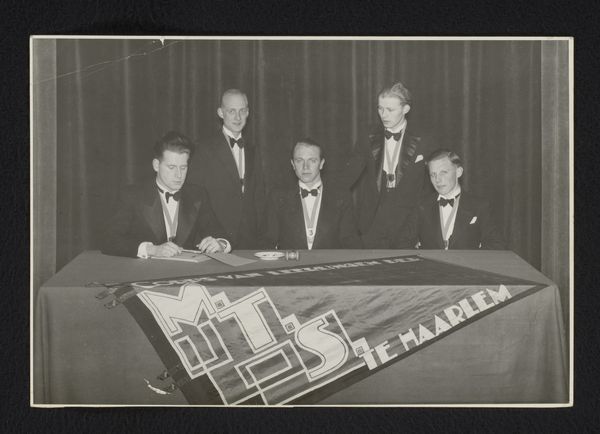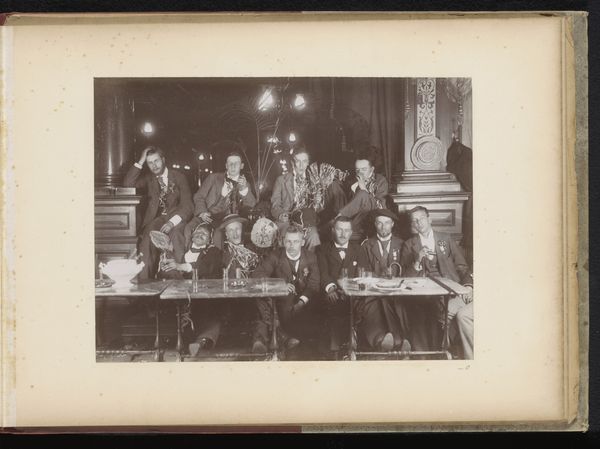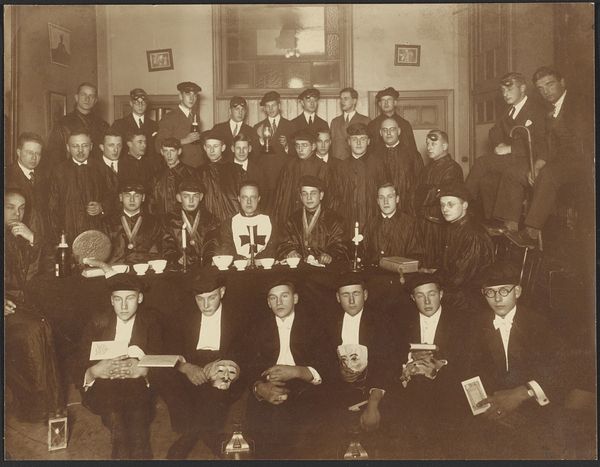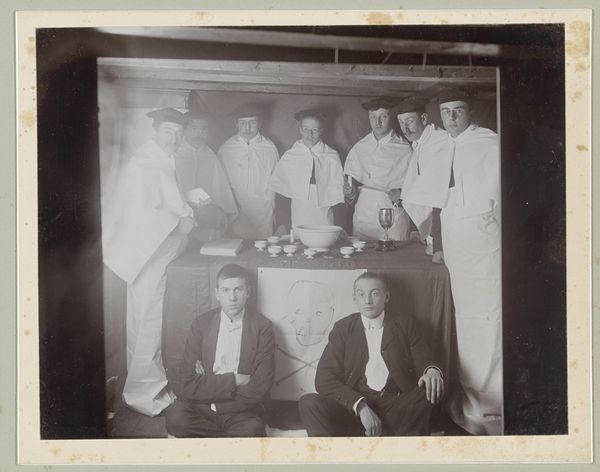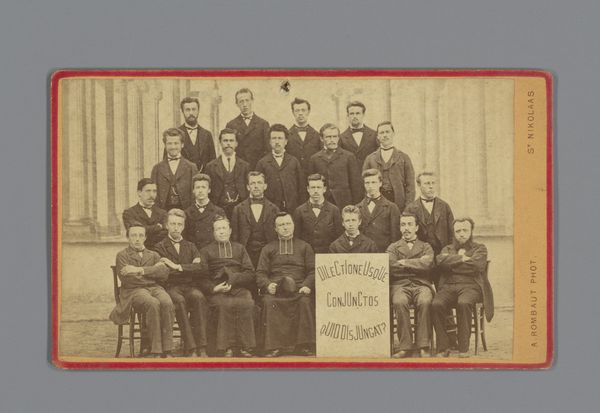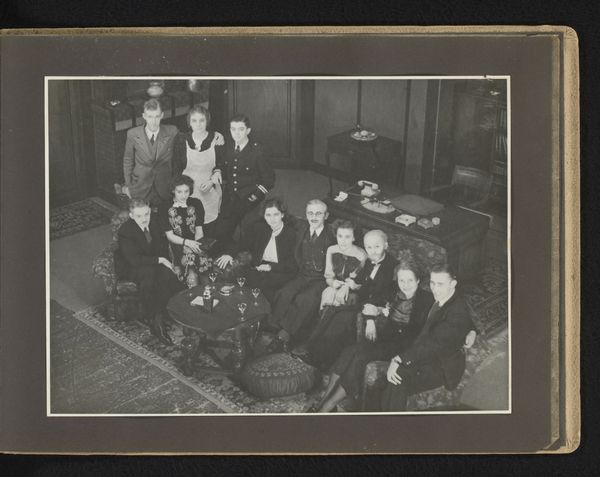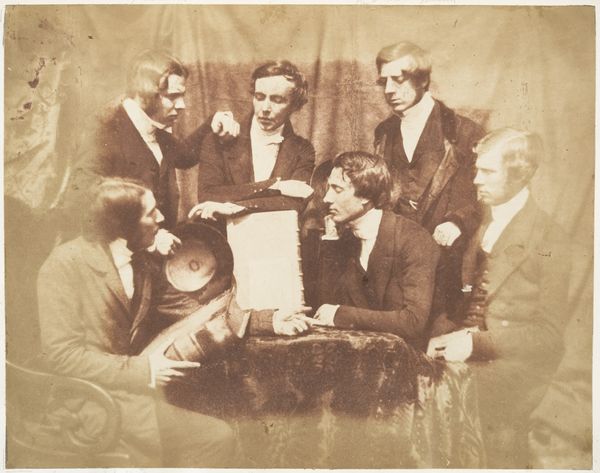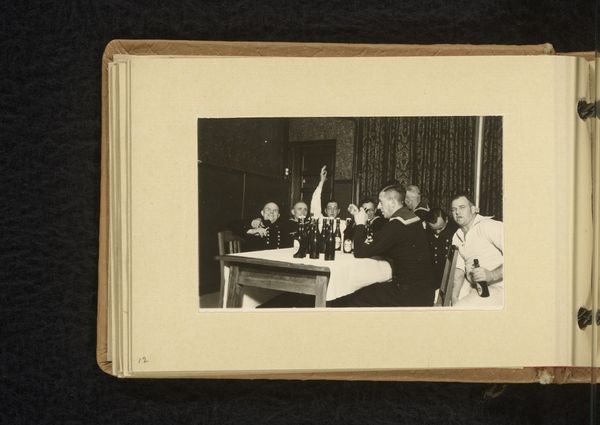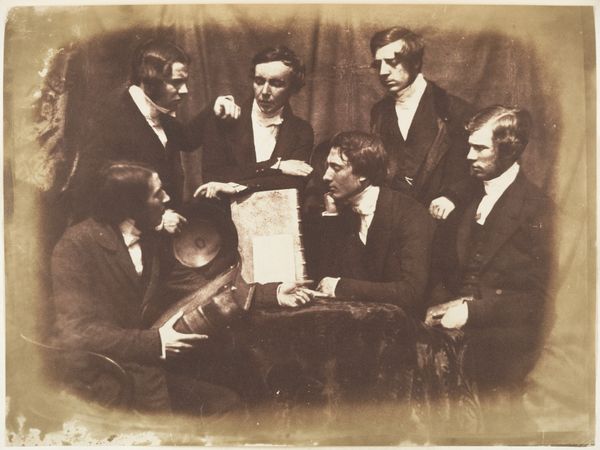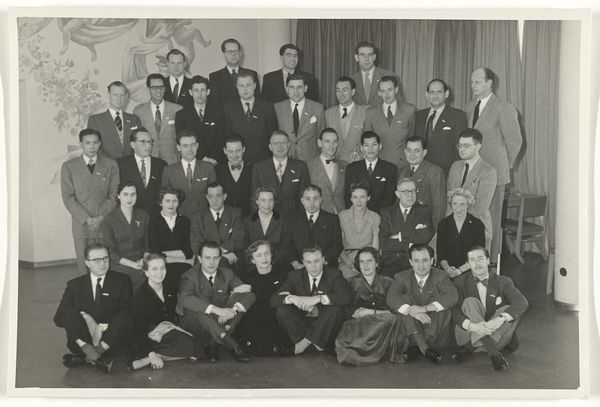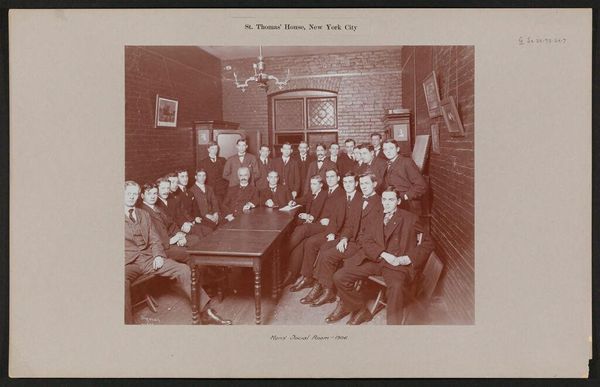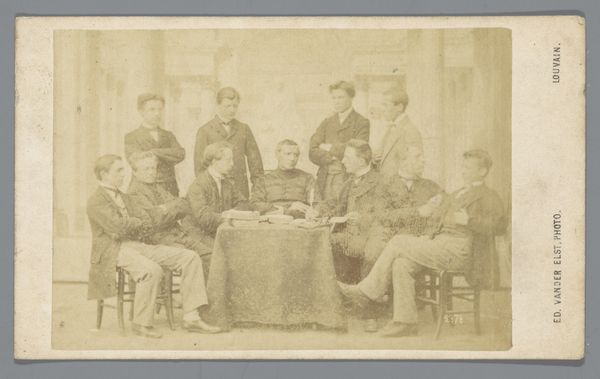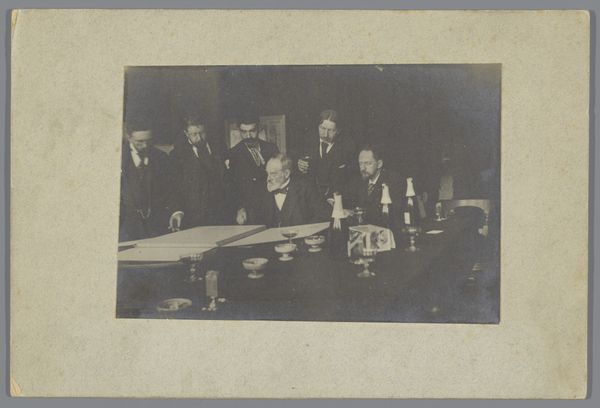
photography, gelatin-silver-print
#
portrait
#
archive photography
#
photography
#
historical photography
#
historical fashion
#
gelatin-silver-print
#
ashcan-school
#
history-painting
Dimensions: height 173 mm, width 231 mm, height 211 mm, width 285 mm
Copyright: Rijks Museum: Open Domain
Curator: Here we have a gelatin-silver print photograph titled "Bestuur Corps 1935-1936 van leerlingen van de MTS te Haarlem" taken sometime between 1935 and 1936 by Fotobureau Stevens. Editor: There's something both strikingly formal and a little absurd about it. The almost theatrical lighting contrasts with what feels like a very commonplace moment. The texture looks pretty raw for a formal photo, what sort of print is it? Curator: It's a gelatin-silver print. Notice how the composition leads the eye—the convergence of the young men's gaze directing attention toward the table. Semiotically, the arrangement underscores hierarchy and focused activity. Their expressions project diligence. Editor: The making of the photograph speaks of deliberate choices; these young men wear their formal suits for the picture. It is interesting to wonder what went into preparing the surface for the inscription displayed: "Corps van leerlingen der MTS te Haarlem". Curator: Indeed. Structurally, we observe a distinct layering—the dark backdrop, the subjects, the text banner, all harmoniously creating spatial depth. The limited tonal range intensifies the somber mood. I appreciate that. Editor: It speaks to their labor—both visible and invisible. Think of the preparation, and materials from that time period. These formal choices would underscore how this document serves as propaganda and records. Curator: An astute observation. The careful composition mirrors traditional history paintings. Even in its grayscale, there are implied social strata reflected. Editor: Beyond mere subject matter, it prompts deeper thinking about class dynamics during the interwar period and even challenges how value is attributed through artistic materials and forms of work. The photo's capacity for reflection keeps drawing me in. Curator: Absolutely. After scrutinizing how meaning emerges, one finds additional substance. The photo serves simultaneously as a period snapshot and a visual enigma that prompts introspection. Editor: Yes, in considering production—especially where value lies—it casts a lens not just on an event, but also its significance as shaped by material and its representation of people through it.
Comments
No comments
Be the first to comment and join the conversation on the ultimate creative platform.
